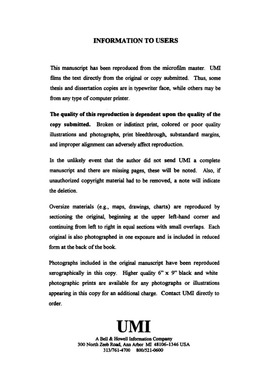| dc.contributor.advisor | Dillon, Connie, | en_US |
| dc.contributor.author | Payne, Henry Eugene. | en_US |
| dc.date.accessioned | 2013-08-16T12:29:59Z | |
| dc.date.available | 2013-08-16T12:29:59Z | |
| dc.date.issued | 1998 | en_US |
| dc.identifier.uri | https://hdl.handle.net/11244/5615 | |
| dc.description.abstract | The purpose of this study was to investigate the effects of using a student response system, and the capabilities it represents, as compared to using an audio conferencing system, and the capabilities it represents, on learner achievement, learner satisfaction, and the amount of interaction, both actual and perceived, in an interactive video teletraining class. The subjects were 70 primarily upper division undergraduate students enrolled in the Principles of Marketing course at Langston University. The study design was a quasi-experimental non-equivalent control group design. Students were equally split into two treatment groups. One treatment group had the use of a student response system, which provided students with both voice and data interaction capability, designed into its presentation. The other treatment group had the use of an audio conferencing system, which provided students with only an audio interaction capability, designed into its presentation. The study found no significant differences between treatment groups on learner satisfaction and the amount of learner perceived interaction. The study did find significant differences on learner achievement and the actual level of verbal interaction. Students using the student response system had significantly higher posttest scores measuring learner achievement. Students using the audio conferencing system had a significantly higher level of verbal interaction, while students using the student response system had a higher level of overall interaction, but not statistically significantly higher. All 35 students using the student response system interacted, using the voice and/or the data interaction capabilities of the student response system, while only 9 of the 35 students using the audio conferencing system used the voice interaction only capability of the audio conferencing system. | en_US |
| dc.format.extent | x, 206 leaves ; | en_US |
| dc.subject | Education, Business. | en_US |
| dc.subject | Education, Technology of. | en_US |
| dc.subject | Interactive videos | en_US |
| dc.subject | Telecommunication in education. | en_US |
| dc.subject | Education, Higher. | en_US |
| dc.subject | Interaction analysis in education. | en_US |
| dc.title | The effects of a student response system on student achievement, satisfaction and interaction in an interactive video teletraining class. | en_US |
| dc.type | Thesis | en_US |
| dc.thesis.degree | Ph.D. | en_US |
| dc.thesis.degreeDiscipline | Department of Educational Leadership and Policy Studies | en_US |
| dc.note | Source: Dissertation Abstracts International, Volume: 59-03, Section: A, page: 0793. | en_US |
| dc.note | Major Professor: Connie Dillon. | en_US |
| ou.identifier | (UMI)AAI9826296 | en_US |
| ou.group | Jeannine Rainbolt College of Education::Department of Educational Leadership and Policy Studies | |
